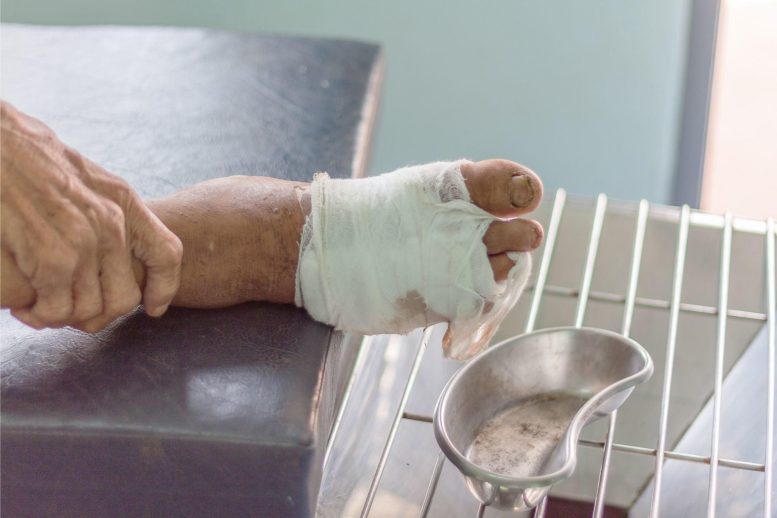
Diabetic wounds, also known as diabetic foot ulcers, are a common complication of diabetes. They are typically caused by a combination of factors such as poor circulation, nerve damage, and prolonged high blood sugar levels. These wounds can occur on the feet, legs, and toes, and can be difficult to heal due to the decreased ability of the body to fight infection and repair damaged tissue.
A new material has been discovered by scientists that can accelerate the healing of diabetic wounds with a single application.
A new class of polymer that promotes healing in hard-to-treat diabetic wounds has been discovered by researchers from the University of Nottingham. The polymer gives instructions to both immune and non-immune cells, according to a study published in the journal Advanced Materials.
Wound healing is a complex biological process that involves various cell types working together, with a cell type called fibroblasts playing a critical role in forming new tissue required for healing. Diabetes can disrupt these processes in cells making wound healing slow and difficult to treat. This can lead to infection and in extreme cases the need for amputation.
Experts from the School of Life Sciences and Pharmacy screened 315 different polymer surfaces, examining the different chemical makeup of each until they identified a polymer type that actively drives fibroblasts and immune cells to promote healing. A team from the School of Engineering made small particles that are decorated with this polymer on their surface. These particles could be directly applied to the wound area.
A polymer is a chemical compound made up of molecules bonded together in long, repeating chains. This structure gives polymers unique properties that can be tailored for different uses. Using polymer microparticles the team showed how this new material, when delivered to a wound on an animal model, produces three times more fibroblast activity over a period of up to 96 hours and achieved more than 80% wound closure.
This new polymer could be applied as a coating to standard wound dressings to provide a fast and effective treatment.
Professor Amir Ghaemmaghami from the School of Life Sciences at the University of Nottingham is one of the lead authors on the study and says: “This research is a significant step towards being able to create a new, low cost, effective treatment for diabetic wounds. The results we saw were achieved in just one application, which could be transformative for patients whose current treatment often involves repeated treatments delivered by trained health professionals.”
Professor Morgan Alexander from the School of Pharmacy at the University of Nottingham added: “We have shown the medical potential of novel polymers in previous work; our bacterial biofilm-resistant materials are used on urinary catheters in the NHS, showing how this can prevent infection by changing the bacterial cell behavior at the polymer surface. These polymers also have the potential to be easily applied to dressings, and we are already working with industry partners to develop ways to help wound healing in this way.”
Reference: “Microparticles Decorated with Cell-Instructive Surface Chemistries Actively Promote Wound Healing” by Arsalan Latif, Leanne E. Fisher, Adam A. Dundas, Valentina Cuzzucoli Crucitti, Zeynep Imir, Karen Lawler, Francesco Pappalardo, Benjamin W Muir, Ricky Wildman, Derek J. Irvine, Morgan R Alexander and Amir M. Ghaemmaghami, 28 November 2022, Advanced Materials.
DOI: 10.1002/adma.202208364

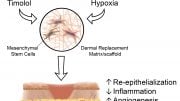
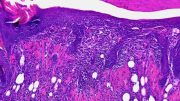
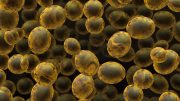
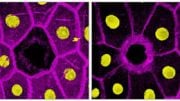
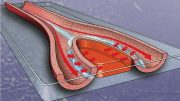
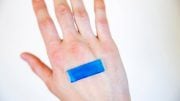
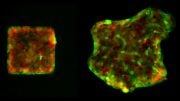
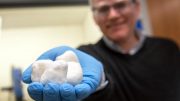
Be the first to comment on "A Game Changer for Diabetic Wound Treatment: New Material Speeds Up Healing"